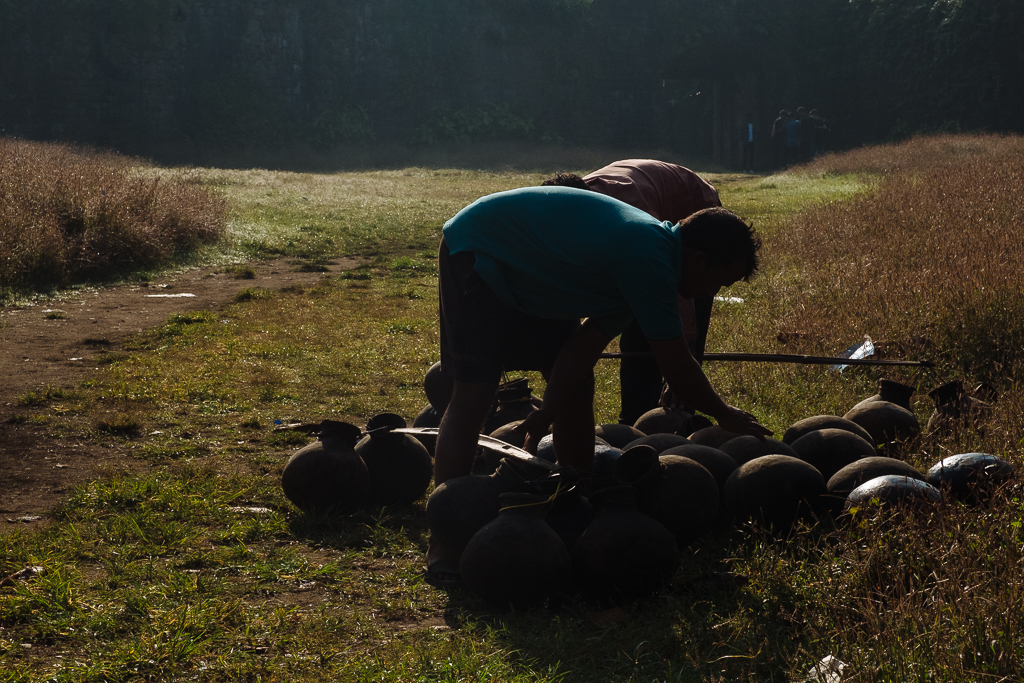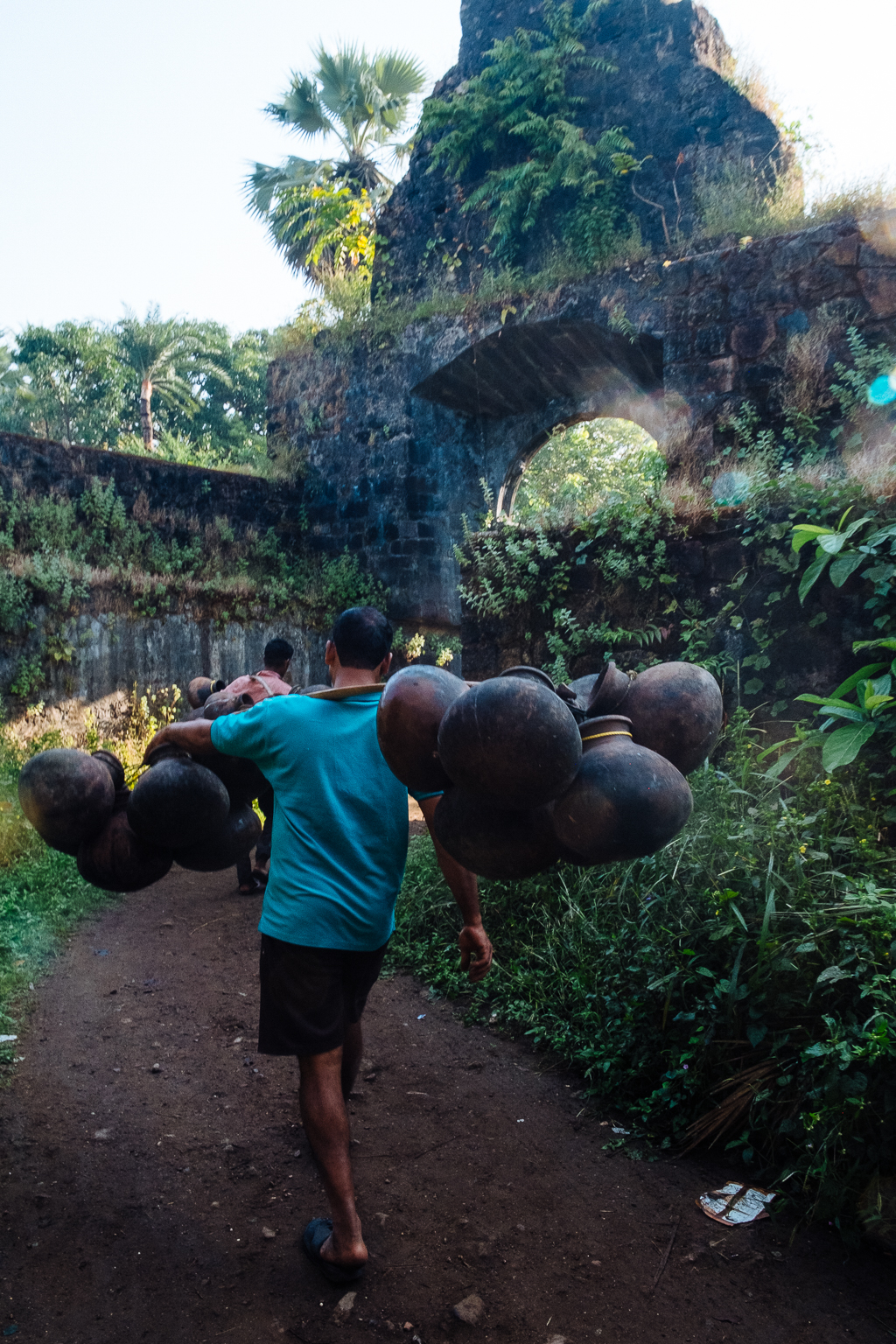Fortaleza de São Sebastião de Baçaím’s Crown of Palms
Palm nectar harvesting in Vasai Fort
Today, rising above the Fortaleza de São Sebastião de Baçaím, as the Portuguese called it, are the palm trees. If you live in Mumbai and have tasted the drink called Nira, this is where a sizeable portion of it comes from.
 |
Back in Bengal, workers used their skills to harvest nectar to make palm jaggery. Extracting nectar is simple and fascinating, requiring no crushing or leaching. The nectar is obtained by scraping most tender parts just below the crown. After the pots are removed in the morning, birds feast on nectar. After lunch and late afternoon, the pots are placed again to collect nectar.
Palms around the subcontinent
The nectar can be extracted from different palms. Here is a video from the Konkan region showing how the nectar is extracted for fermentation to make Tadi Madi from a coconut palm, as it is called in this region. The occupation is called toddy-tapping in Indian English. https://youtu.be/iTnd93uF6FI
PARI has a beautiful photo essay on how the palm’s nectar is harvested and turned into palm sugar in Tamil Nadu.
Toddy is banned in Tamil Nadu. It’s tapping for palm jaggery and Neera that sustains livelihoods. But there’s more to it, as you can see from this story.
And this is a short history of the toddy tappers.
While this story is about Neera, the other product, toddy, plays a more important role in Indian societies. Ajay Kamakalaran has a story about how the drink can also break divisions.
In Goa, you can even learn the skills to become a toddy tapper.
Stepping across the Palk Straits onto the Island of Sri Lanka, many things are the same, including how the palms are tapper. https://www.antoinejonquiere.com/toddy-tappers
Toddy Tapping was always an important occupation across South Asia. It was and is a caste-based occupation. This story from Thalassery in Kerala briefly introduces toddy tapping, caste and discrimination. The story's title is The Last Tappers, but should we wait for a while before we put a full stop?

















































